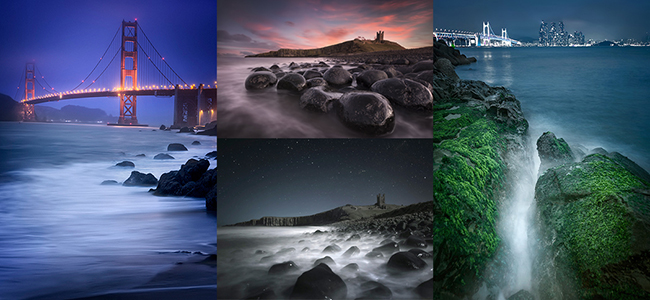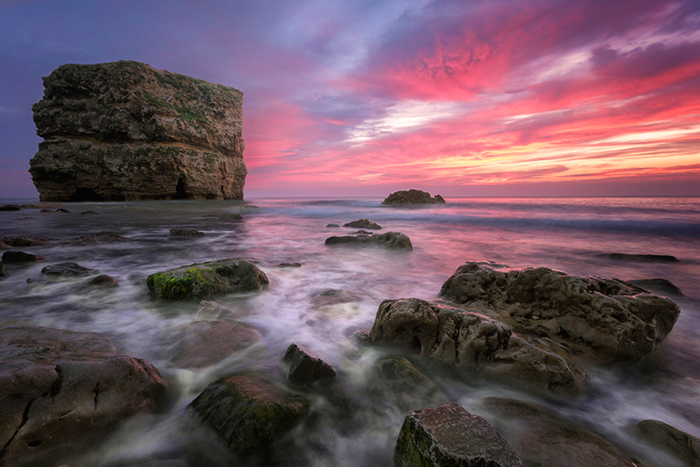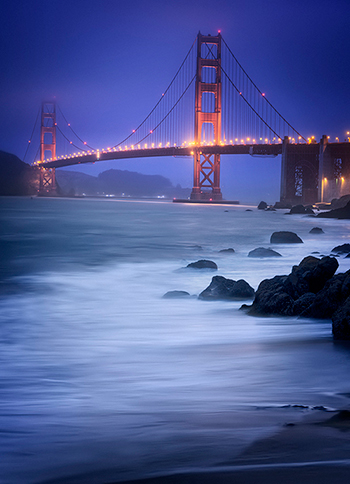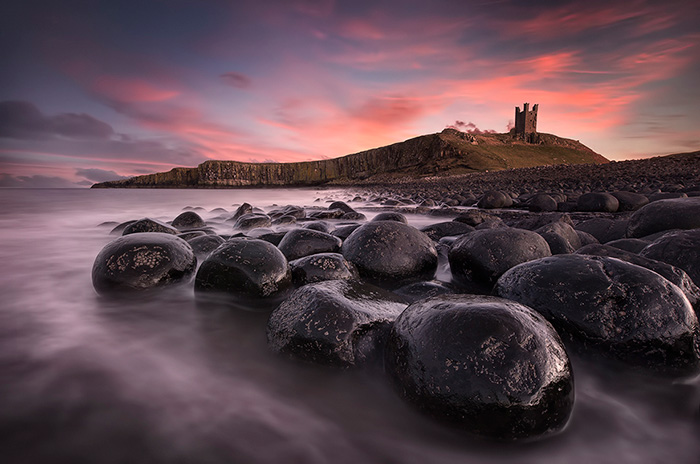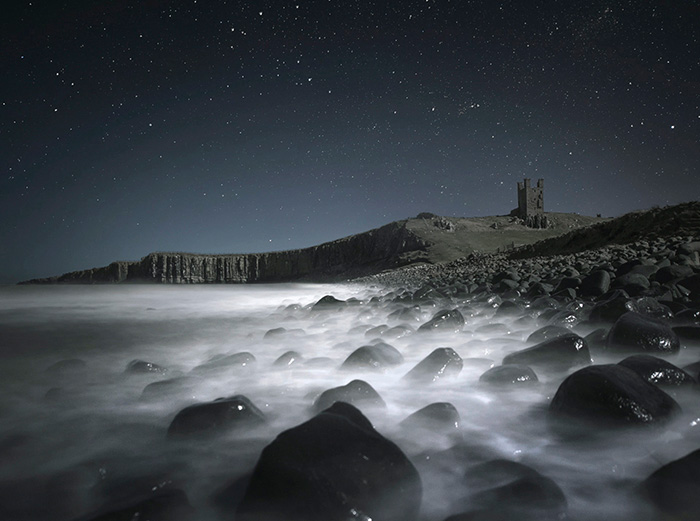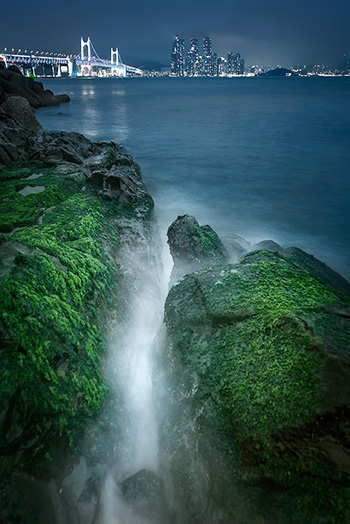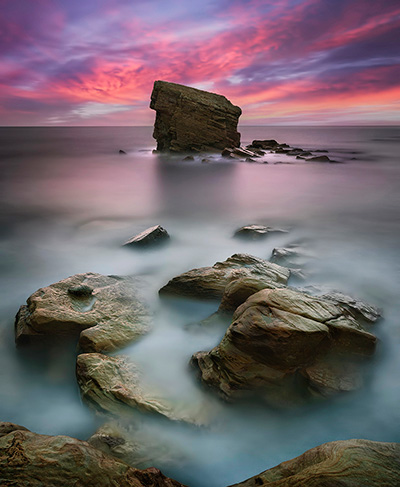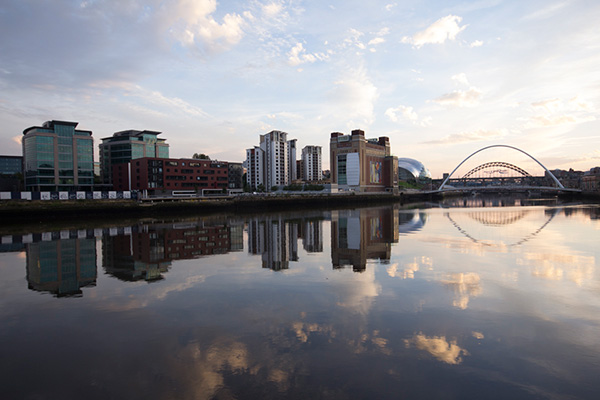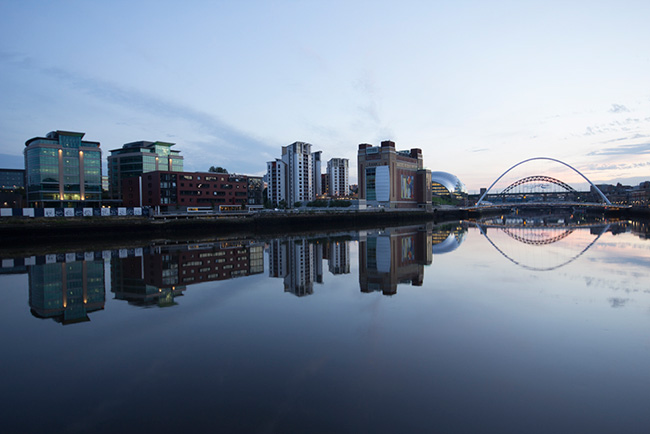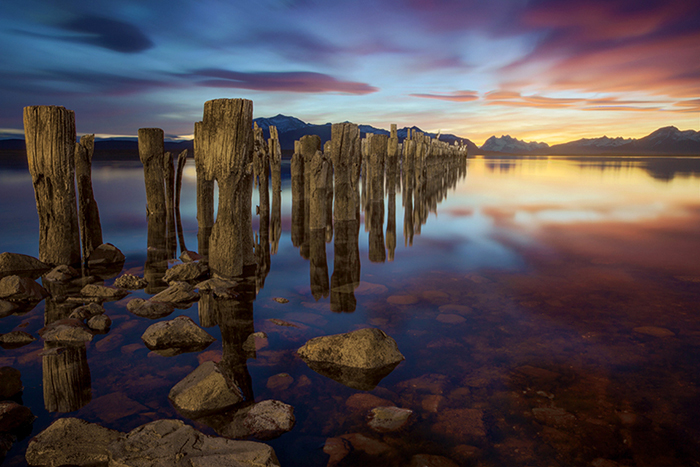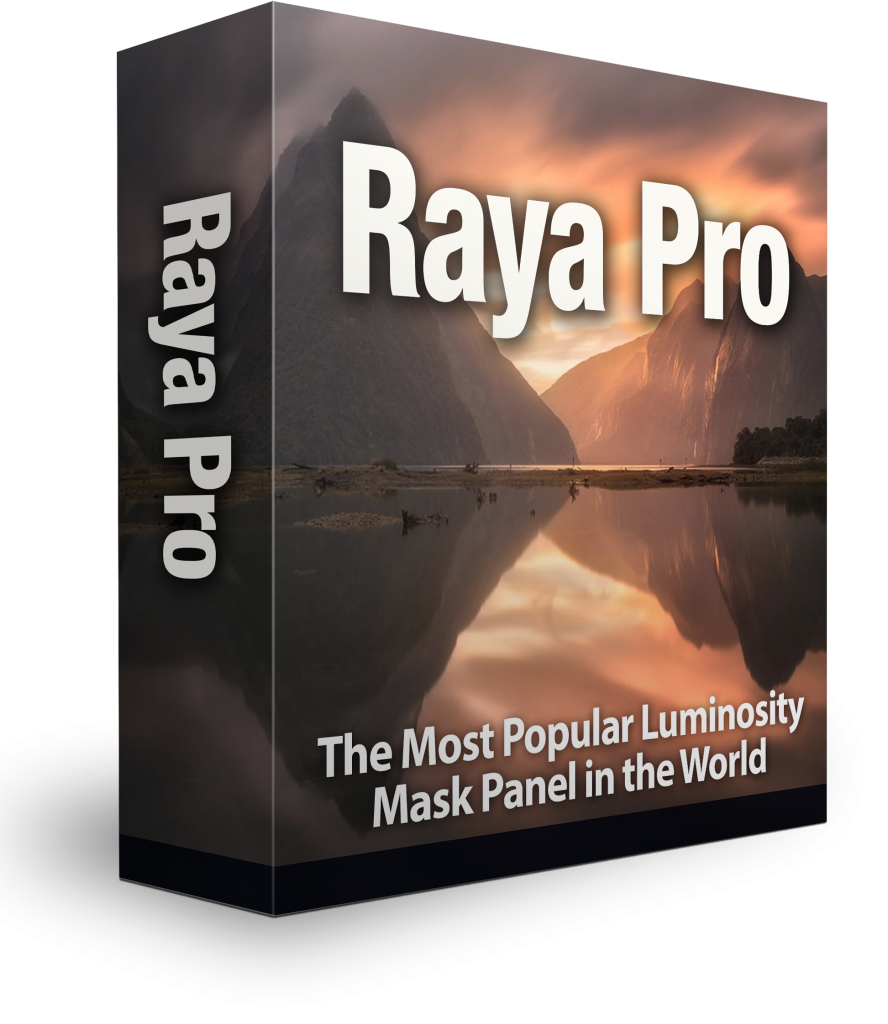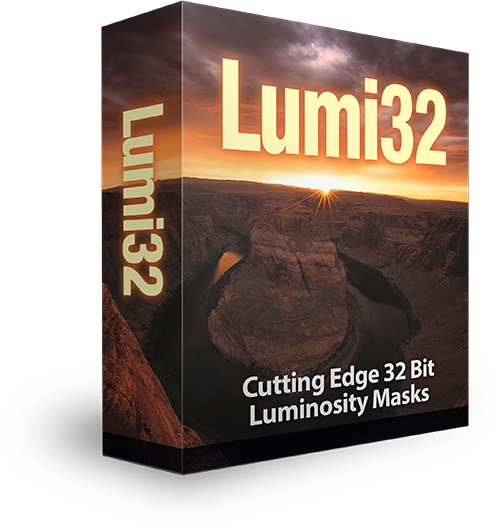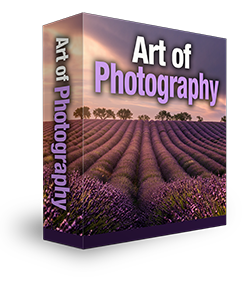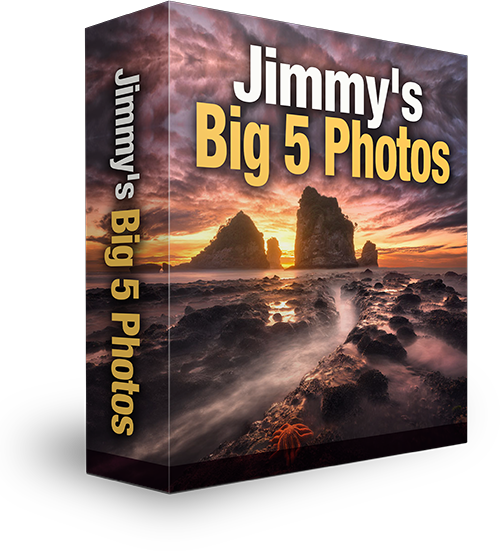Reflections, Smooth, Frothy – How To Photograph Water To Get Different Effects
The way in which we choose to capture water in images can create a dramatic change of mood to the entire scene. In this article, we’ll look at 4 different water textures: motion, white foam, smooth and reflections. We’ll understand the conditions needed to create these textures and how varying shutter speeds change these textures. Learn How To Photograph Water To Get Different Effects by knowing when and why to adjust your shutter speed.

Shutter Speed vs Water Motion
There isn’t exactly a solid shutter speed formula to work with when trying to capture various water textures. We have to set our shutter speed according to the movement of water, the strength of the tide, and the interaction of the water on other elements, like rocks. Often it is impossible to obtain certain water textures in some scenes. For example, if you’re looking at calm water with a crystal clear reflection, it’s more or less impossible to capture a white, frothy texture, and the reverse is also true.
However, having a good understanding of how to work with shutter speeds and water to create certain textures, will give you greater control of your image when you’re out in the field.
Capturing Water Movement
How to photograph water to get different effects from moving water. One great way to enhance the mood of an image is to capture the movement of the water as it comes and goes. It is essential, in this situation, that your water has plenty of texture, often marked by white lines that indicate the direction of its movement.
The general rule here is that there should be a decent amount of movement in the water. Calm water has very little discernible movement. In terms of shutter speed, shorter times will capture the greatest amount of movement. Generally, anywhere between 1 and 5 seconds will be best, but there are always exceptions.
This is a great rule to follow: Make your shutter speed long enough to capture the movement of a single wave as it comes and goes. If you capture multiple waves washing over each other, the water will generally appear frothier, but not always.
Image Shutter Speed: 1.6 Seconds: Learn To Create This Image
Image Shutter Speed: 5 Seconds
The Exception:
In the image below, I managed to capture the movement of the water with a 15 second exposure, which in my experience is often too long for this type of effect. Usually, at these shutter speeds, the water loses its texture and starts to become a white foam, as many waves overlap each other. However, this was a slow tide, so in 15 seconds I think I only captured 2 waves which reached this point in the rocks and slowly drained away. However, a shorter shutter speed would have captured a greater amount of motion.
Image Shutter Speed: 15 Seconds
White, Frothy Water
White, frothy water is one of my favourite water textures. It is also very easy to capture. Typically you need water movement to be strong enough to create white foam as it comes into contact with other objects. Then, instead of going for a shorter shutter speed, which will capture more movement, you should extend your shutter speed long enough so that you capture multiple waves coming and going, all creating white foam. It isn’t essential that you capture multiple waves, but it will enhance the frothiness of the water if you do.
The image below is of the same place as the image above, Dunstanburgh castle, and shot on the same day. There’s only 5 seconds difference in shutter speed between the two. Yet the image below has far more froth in it. The main difference here is the strength of the tide. On the image below, the tide was significantly stronger, crashing down on the rocks in the centre. This created a lot of foam which was easy to capture. In the image below we’ve still captured some of the movement of the water, but it is significantly less defined.
Image Shutter Speed: 20 Seconds
The Exception:
If you have extremely fast-moving, choppy water, you can capture a foamy texture at a much shorter shutter speed. For example, the shutter speed of the image below was only 5 seconds. It’s a foamy texture because the water crashed onto these rocks, gathered in the gully as a big mix of foamy bubbles and water, and rushed down back into the sea, very quickly. In a few seconds, it was gone.
If I used a longer exposure, and it was only this single wave that fell into the gully, the image would look very different, with a much fainter hint of water and foam. That is why it is important to understand the relationship between the water in the scene in front of you, and the shutter speed you choose to use, and to be flexible in your approach.
Image Shutter Speed: 5 Seconds
Smooth Water
One of the biggest allures to long exposure photography is being able to capture silky smooth water. This type of water texture is more straight forward than other textures to capture. Basically, the longer the exposure the smoother the water. If the water is extremely choppy, as was the case in the image below, where the water meets other objects, the water will be characterised by a milky texture. A 10-stop ND filter will allow you to create extremely long shutter speeds.
Image Shutter Speed: 301 Seconds
Crisp Reflections In Water Photography
When the conditions are right, there is nothing better than capturing a beautifully crisp reflection. Shutter speed has very little impact here other than slightly smoothing the water out, making the reflection slightly clearer. Essentially, bodies of water that are shielded from wind, or deep, slow-moving rivers are prime locations to capture beautiful reflections. Here’s how to Photograph water to get different effects and capture crips reflections.
The two images below show how shutter speed affects the same scene. With the first image, the shutter speed is relatively short. We still have a nice reflection but the water also has some waves/ripples that break up the reflection.
Image Shutter Speed: 1/20 second (Image Straight Out Of Camera)
On the image below, taken an hour later, I extended the shutter speed very slightly, but the difference is enough to completely smooth out the water and leave us with a near-perfect reflection.
Image Shutter Speed: 0.6 seconds (Image Straight Out Of Camera)
The final image below is just a quick example of how shutter speed does not make a big difference to water texture in calm waters. This was a 61-second exposure. because the scene was extremely dark and I wanted to capture cloud movement. However, even if the shutter speed was 1 second, it would have captured the same, clear reflection because the water was virtually still on this day.
Image Shutter Speed: 1.6 Seconds: Learn To Create This Image
I hope you’ve found this article on How To Photograph Water To Get Different Effects useful. Please feel free to share it with photography friends who you think will find it useful too!
Recent Articles On Shutter Evolve
Overcast Landscapes Don’t Have to Be Boring
How To Add Dramatic Car Trails To Your Photos In Photoshop
How To Add Clouds To A Sky In Photoshop
